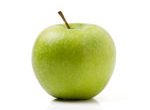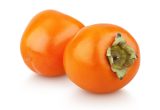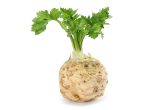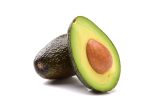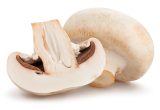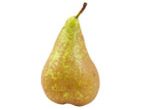Coconut

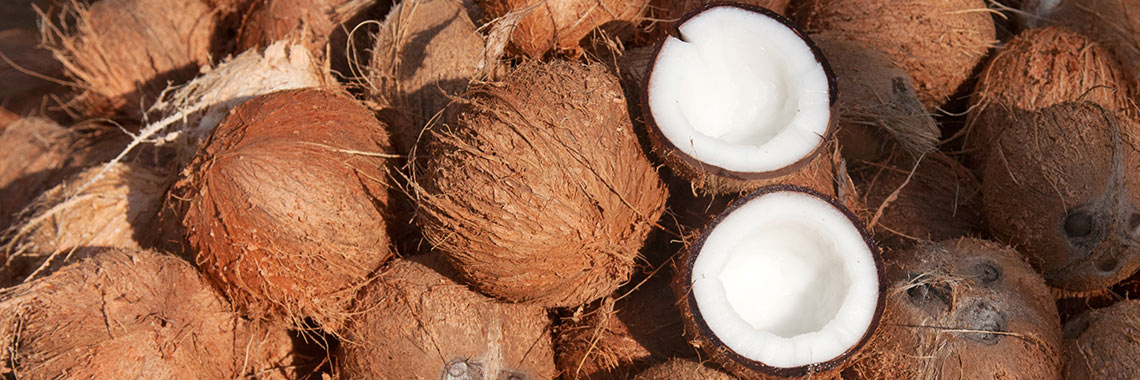
Description
- The coconut tree is one of the most widely growing crops in the tropics (Huang, 2013).
- The coconut (Cocos nucifera) belongs to the Araceae family.
PHYSICAL AND ORGANOLEPTIC CHARACTERISTICS
- The coconut is generally composed of coconut water and the kernel, i.e. the pulp and the shell, the whole being enveloped by a fibrous and fragile tissue called the husk (Patil, 2018). It generally contains 35% husk, 12% shell, 28% fruit and 25% water (Patil, 2018).
- Coconut takes about 12 months to ripen (Patil, 2018).
- In one study, the taste characteristics of fruit water from four coconut cultivars (African, Malaysian Yellow Dwarf, Equatorial Guinea Green Dwarf and PB121) were analysed. During the ripening of the nuts, the sweetness of the coconut water is predominant regardless of the stage of ripening. At maturity, it decreases because sugars are involved in the formation of the kernel (Assa, 2012).
- Polyphenol oxidase is the enzyme linked to the stability of coconut water. Its activity is time and temperature dependent and results in pink colouration of the water (Thaisakornphun, 2017).
COMPOSITION CHARACTERISTICS (excluding macronutrients, vitamins and minerals)
- Coconut water contains vitamins, minerals (potassium, sodium, chloride, magnesium), cytokines and proteins and has diuretic, anti-ageing and antimicrobial properties (Thaisakornphun, 2017; Patel, 2018).
- The consumption of coconut water reportedly prevents hypocitraturia, a metabolic disease frequent in people suffering from kidney stones. This is because coconut water is rich in alkalis that inhibit renal reabsorption of citrate, an inhibitor of kidney stone formation, thereby increasing urinary citrate excretion (Patel, 2018).
FRESH
The following values are approximate and depend on variety, season, ripeness, cultivation conditions, etc.
Fresh coconut provides on average 358 calories (kcal) per 100 g, i.e. 1470 kJ. A portion of coconut weighs on average 30 g, which represents an energy intake of 115.50 kcal approximately.
COMPOSITION TABLES
For each nutrient, the tables provide information on the content, minimum and maximum values for 100 g net of coconut, while the percentage of the Dietary Reference Values (DRVs) is calculated for a 30 g portion.
*Regulation (EC) No 1924/2006 of the European Parliament and of the Council of 20 December 2006 on nutrition and health claims made on foods
MACRONUTRIENTS
| Constituent (g) |
Average content
per 100g |
Min-Max per 100g |
Average content
per 30g |
DRV% * |
|---|---|---|---|---|
| Water | 47 | - | 14,10 | - |
| Fibers | 9 | - | 2,70 | - |
| Carbohydrates | 6,22 | - | 1,87 | 0,72 |
| Sugars | 6,22 | NC - 6,23 | 1,87 | 2,07 |
| Lipids | 33,50 | - | 10,05 | 14,36 |
| Saturated fat | 29,70 | - | 8,91 | 44,55 |
| Protein | 3,93 | NC - 4,56 | 1,18 | 2,36 |
| Constituent (g) | Amount | Min-Max | DRV% |
|---|---|---|---|
| Water | Ciqual 2020 | - | - |
| Fibers | Ciqual 2020 | - | - |
| Carbohydrates | Ciqual 2020 | - | Règlement (UE) N°1169/2011 du parlement Européen et du conseil du 25 octobre 2011 |
| Sugars | Ciqual 2020 | - | Règlement (UE) N°1169/2011 du parlement Européen et du conseil du 25 octobre 2011 |
| Lipids | Ciqual 2020 | - | Règlement (UE) N°1169/2011 du parlement Européen et du conseil du 25 octobre 2011 |
| Saturated fat | Ciqual 2020 | - | Règlement (UE) N°1169/2011 du parlement Européen et du conseil du 25 octobre 2011 |
| Protein | Ciqual 2020 | - | Règlement (UE) N°1169/2011 du parlement Européen et du conseil du 25 octobre 2011 |
Zoom on carbohydrates
- The carbohydrate content of coconut is 1.87 g for a 30 g serving.
- This amount corresponds to 6.22 g carbohydrate per 100 g, which is lower than the average carbohydrate content in nuts (18.13 g per 100 g).
Zoom on fibres
- Coconut is source of fibre* as it provides more than 1.5 g of fibre per 100 kcal.
- This amount is slightly lower than the average quantity of fibre in oleaginous fruits (9.32 g per 100 g).
- For a 30 g portion, coconut contains 2.70 g of fibre.
Zoom on proteins
- Coconut provides a quantity of proteins significantly lower than the average proteins found in nuts (3.93 g per 100 g vs 16.73 g per 100 g).
- For a 30 g serving, the amount of protein is 1.18 g.
Zoom on lipids
- Its fat content is 10.05 g for a 30 g portion, which is significant (33.50 g per 100 g), but remains lower than the average fat content of nuts (41.27 g per 100 g).
- Contrary to the other nuts, coconut contains mainly saturated fatty acids of which mainly lauric acid (14.90 g for 100 g).
* Regulation (EC) No 1924/2006 of the European Parliament and of the Council of 20 December 2006 on nutrition and health claims made on foods.
MINERALS AND TRACE ELEMENTS
| Constituent |
Average content
per 100g |
Min-Max per 100g |
Average content
per 30g |
DRV% * |
|---|---|---|---|---|
| Calcium (mg) | 14 | - | 4,20 | 0,53 |
| Chloride (mg) | - | - | - | - |
| Copper (mg) | 0,44 | - | 0,13 | 13,20 |
| Iron (mg) | 2,43 | - | 0,73 | 5,21 |
| Iodine (µg) | 1,20 | - | 0,36 | 0,24 |
| Magnesium (mg) | 32 | - | 9,60 | 2,56 |
| Manganese (mg) | 1,50 | - | 0,45 | 22,50 |
| Phosphorus (mg) | 113 | - | 33,90 | 4,84 |
| Potassium (mg) | 356 | - | 106,80 | 5,34 |
| Selenium (µg) | - | - | - | - |
| Sodium (mg) | 20 | - | 6 | - |
| Zinc (mg) | 1,10 | - | 0,33 | 3,30 |
| Constituent | Amount | Min-Max | DRV% |
|---|---|---|---|
| Calcium (mg) | Ciqual 2020 | - | Règlement (UE) N°1169/2011 du parlement Européen et du conseil du 25 octobre 2011 |
| Chloride (mg) | Ciqual 2020 | - | Règlement (UE) N°1169/2011 du parlement Européen, et du conseil du 25 octobre 2011 |
| Copper (mg) | Ciqual 2020 | - | Règlement (UE) N°1169/2011 du parlement Européen et du conseil du 25 octobre 2011 |
| Iron (mg) | Ciqual 2020 | - | Règlement (UE) N°1169/2011 du parlement Européen et du conseil du 25 octobre 2011 |
| Iodine (µg) | Ciqual 2020 | - | Règlement (UE) N°1169/2011 du parlement Européen et du conseil du 25 octobre 2011 |
| Magnesium (mg) | Ciqual 2020 | - | Règlement (UE) N°1169/2011 du parlement Européen et du conseil du 25 octobre 2011 |
| Manganese (mg) | Ciqual 2020 | - | Règlement (UE) N°1169/2011 du parlement Européen et du conseil du 25 octobre 2011 |
| Phosphorus (mg) | Ciqual 2020 | - | Règlement (UE) N°1169/2011 du parlement Européen et du conseil du 25 octobre 2011 |
| Potassium (mg) | Ciqual 2020 | - | Règlement (UE) N°1169/2011 du parlement Européen et du conseil du 25 octobre 2011 |
| Selenium (µg) | Ciqual 2020 | - | Règlement (UE) N°1169/2011 du parlement Européen et du conseil du 25 octobre 2011 |
| Sodium (mg) | Ciqual 2020 | - | - |
| Zinc (mg) | Ciqual 2020 | - | Règlement (UE) N°1169/2011 du parlement Européen et du conseil du 25 octobre 2011 |
Zoom on minerals and trace elements
- Coconut is a source of manganese as it provides the equivalent of 22.50% of DRVs, i.e. 0.45 mg for a 30 g portion.
- Coconut also provides a significant amount of copper, equivalent to 13.20% of DRVs, i.e. 0.13 mg for a 30 g serving.
- The other minerals and trace elements are present in smaller quantities in coconut since they cover less than 6% of DRVs for a 30 g portion.
VITAMINS
| Constituent |
Average content
per 100g |
Min-Max per 100g |
Average content
per 30g |
DRV% * |
|---|---|---|---|---|
| Provitamin A Beta-carotene (µg) | - | - | - | - |
| Vitamin A equivalent (µg) | - | - | - | - |
| Vitamin B1 (mg) | 0,066 | - | 0,02 | 1,80 |
| Vitamin B2 (mg) | 0,02 | - | 0,01 | 0,43 |
| Vitamin B3 (mg) | 0,54 | - | 0,16 | 1,01 |
| Vitamin B5 (mg) | 0,30 | - | 0,09 | 1,50 |
| Vitamin B6 (mg) | 0,054 | - | 0,02 | 1,16 |
| Vitamin B9 (µg) | 26 | - | 7,80 | 3,90 |
| Vitamin C (mg) | 3,30 | - | 0,99 | 1,24 |
| Vitamin E (mg) | 0,24 | - | 0,07 | 0,60 |
| Vitamin K1 (µg) | 0,20 | - | 0,06 | 0,08 |
| Constituent | Amount | Min-Max | DRV% |
|---|---|---|---|
| Provitamin A Beta-carotene (µg) | Ciqual 2020 | - | - |
| Vitamin A equivalent (µg) | Calcul à partir de la valeur Provitamine A Béta-carotène* | - | Règlement (UE) N°1169/2011 du parlement Européen et du conseil du 25 octobre 2011 |
| Vitamin B1 (mg) | Ciqual 2020 | - | Règlement (UE) N°1169/2011 du parlement Européen et du conseil du 25 octobre 2011 |
| Vitamin B2 (mg) | Ciqual 2020 | - | Règlement (UE) N°1169/2011 du parlement Européen et du conseil du 25 octobre 2011 |
| Vitamin B3 (mg) | Ciqual 2020 | - | Règlement (UE) N°1169/2011 du parlement Européen et du conseil du 25 octobre 2011 |
| Vitamin B5 (mg) | Ciqual 2020 | - | Règlement (UE) N°1169/2011 du parlement Européen et du conseil du 25 octobre 2011 |
| Vitamin B6 (mg) | Ciqual 2020 | - | Règlement (UE) N°1169/2011 du parlement Européen et du conseil du 25 octobre 2011 |
| Vitamin B9 (µg) | Ciqual 2020 | - | Règlement (UE) N°1169/2011 du parlement Européen et du conseil du 25 octobre 2011 |
| Vitamin C (mg) | Ciqual 2020 | - | Règlement (UE) N°1169/2011 du parlement Européen et du conseil du 25 octobre 2011 |
| Vitamin E (mg) | Ciqual 2020 | - | Règlement (UE) N°1169/2011 du parlement Européen et du conseil du 25 octobre 2011 |
| Vitamin K1 (µg) | Ciqual 2020 | - | Règlement (UE) N°1169/2011 du parlement Européen et du conseil du 25 octobre 2011 |
Zoom on vitamins
- For a portion of coconut (30 g), the other vitamins are present in small quantities, since they cover less than 4% of DRVs.
* Calculation made: Beta-Carotene / 6 + retinol
POLYPHENOLS
Nutrition and health claims
According to the definitions of nutrition claims as presented in Regulation (EC) No 1924/2006 on nutrition and health claims, and in view of the composition of fresh coconut, the following claims may be used:
NUTRITION CLAIMS OF COCONUT
- Source of fibre (100 kcal of coconut provide more than 1.5 g of fibre)
- Source of manganese (30 g of coconut provide more than 15% of DRVs)
HEALTH CLAIMS (for a consumption of 100 g of coconut)
Manganese
- Manganese contributes to:
- normal energy-yielding metabolism,
- maintenance of normal bones,
- normal formation of connective tissues,
- protection of cells from oxidative stress.
References
- Agence nationale de sécurité sanitaire de l’alimentation, de l’environnement et du travail. Table de composition nutritionnelle des aliments Ciqual 2020. Consultée le 27/08/2020 depuis le site internet Ciqual https://ciqual.anses.fr/
- Agence nationale de sécurité sanitaire de l’alimentation, de l’environnement et du travail. Table de composition nutritionnelle des aliments Ciqual pour le calcul des apports nutritionnels CALNUT 2020. Consultée le 22/09/2020 depuis le site internet Ciqual https://ciqual.anses.fr/
- Assa RR, Konan JL, Prades A, Nemlin J. Caractéristiques gustatives de l’eau des fruits de quatre cultivars du cocotier (Cocos nucifera L.). Int J Biol Chem Sci. 2012;6(6):3045-54,
- Huang YY, Matzke AJ, Matzke M. Complete sequence and comparative analysis of the chloroplast genome of coconut palm (Cocos nucifera). PLoS One. 2013;8(8):e74736.
- Patel RM, Jiang P, Asplin J, Granja I, Capretz T, Osann K, et al. Coconut Water: An Unexpected Source of Urinary Citrate. BioMed Research International. 2018;2018: 3061742.
- Patil U, Benjakul S. Coconut Milk and Coconut Oil: Their Manufacture Associated with Protein Functionality. Journal of Food Science. 2018;83(8): 2019–27.
- Règlement (CE) N° 1924/2006 du Parlement européen et du Conseil du 20 décembre 2006 concernant les allégations nutritionnelles et de santé portant sur les denrées alimentaires.
- Règlement (UE) N°432/2012 de la Commission du 16 mai 2012 établissant une liste des allégations de santé autorisées portant sur les denrées alimentaires, autres que celles faisant référence à la réduction du risque de maladie ainsi qu’au développement et à la santé infantiles.
- Règlement (UE) n°1169/2011 du Parlement européen et du Conseil du 25 octobre 2011 concernant l’information des consommateurs sur les denrées alimentaires, modifiant les règlements (CE) n°1924/2006 et (CE) n°1925/2006 du Parlement européen et de Conseil et abrogeant la directive 87/250/CEE de la Commission, la directive 90/496/CEE du Conseil, la directive 1999/10/CE de la Commission, la directive 200/13/CE du Parlement européen et du Conseil, les directives 2002/67/CE et 2008/5/CE de la Commission et le règlement (CE) n°608/2004 de la Commission.
- Thaisakornphun P, Tongchitpakdee S. The effect of pasteurization on enzyme activity and quality of aromatic coconut water. Italian Journal of Food Science. 2017; 30(5): 95–9.



